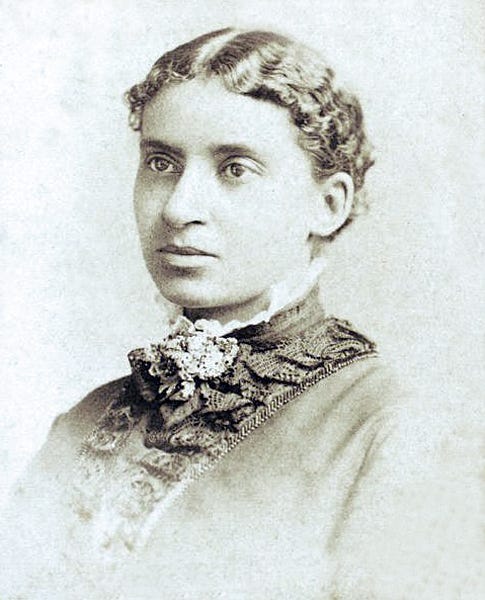Bringing Charlotte Home

By: Susannah Geary
February 28th marked the last day of Black History Month and it was also the eve of Women’s History month. Salem State held the official ribbon cutting ceremony for the opening of the new Charlotte Forten Legacy Room, located in Meier Hall, Room 316B.
Charlotte Forten’s legacy is incredibly important to this university. She was the first African-American graduate of what is now Salem State University and she spent her life educating, writing, translating, and advocating for the rights of people of color and women.
Charlotte Forten was born in Philadelphia to Robert Bridges Forten and Mary Virginia Woods in 1837. Her father raised her as an abolitionist like he was. Forten moved to Salem in 1853 to attend integrated schools for a better education. At the time schools in Philadelphia were segregated. In Salem she attended the Higginson Grammar School and then she attended Salem Normal School to receive her education as a teacher.
At her graduation from Salem Normal School her poem, “A Parting Hymn” was the chosen to be read and it was published in The Liberator, a publication of William Lloyd Garrison, another noted abolitionist. Graduate student Fillette Lovaincy read Forten's poem at the dedication.
Charlotte kept a journal, documenting her experiences in Salem. She detailed the many anti-slavery meetings and discussions she had with her peers. Being in Salem she received more open support of the abolitionist movement but she still faced discrimination despite living in the north. While visiting Boston during a trial of an alleged fugitive she wrote in her journal, “and felt sick at heart as we passed through the streets of Boston on our way to the depot, seeing the military as they rode along, ready at any time to prove themselves the minions of the South.”
In 1856 Forten became the first woman of color to teach white students in Salem, teaching at Salem’s Epes School. Forten never forgot about the slaves in the south even though her life in the north was thriving education wise.
In October of 1862 Forten sailed to Port Royal South Carolina to teach “contraband”. The “contraband of war” they were referring to formerly enslaved people who were freed, a result of the Battle of Port Royal, which was then in Union hands. She was able to educate students who might have never been able to receive an education, but it wasn’t easy. She writes in her journal, “Have had a wearisome day at school, so many little ones. And nearly all in a state of rebellion owing to their teacher’s long absence. Had some newspapers but no letters, which disappointed me greatly.”
Over the years of teaching she continued to translate and have works published including poetry, essays and letters to various people. Forten helped established a league and an association for women of color in Washington, D.C., continuing to speak up for their rights up until her death on July 22nd 1914.
Even before we entered the Legacy Room, the reception and opening remarks in the Sophia Gordon Center, provided information on how passionately the committee worked to get this room open. Professor Gwendolyn Rosemond mentioned how the original room was opened in 1992, but was lost when the library was found structurally unsound in 2007. President Keenan noted: “She paved the way for each and every student of color that walks our campus, each student of color that finds their voice, and each student of color that leaves Salem State to positively impact the future”.
The committee wanted to bring her back home to Salem and have her be known to the students who attend SSU today. Salem’s mayor and Salem State alum Kimberley Driscoll, stated that Charlotte Forten is alive and well with all of us. The people of Salem who are fighting for social justice today are the result of Charlotte Forten’s passion for the betterment of African- Americans and women. We owe a lot of our progress to her life’s work.
The Legacy Room, offers a detailed timeline of her life including direct quotes from her and journals and her peers. You can learn more about her works, her marriage, her father’s involvement in her life, and see photographs of Charlotte and her family in the Legacy Room. This room serves as a safe space and a true tribute to Charlotte.


